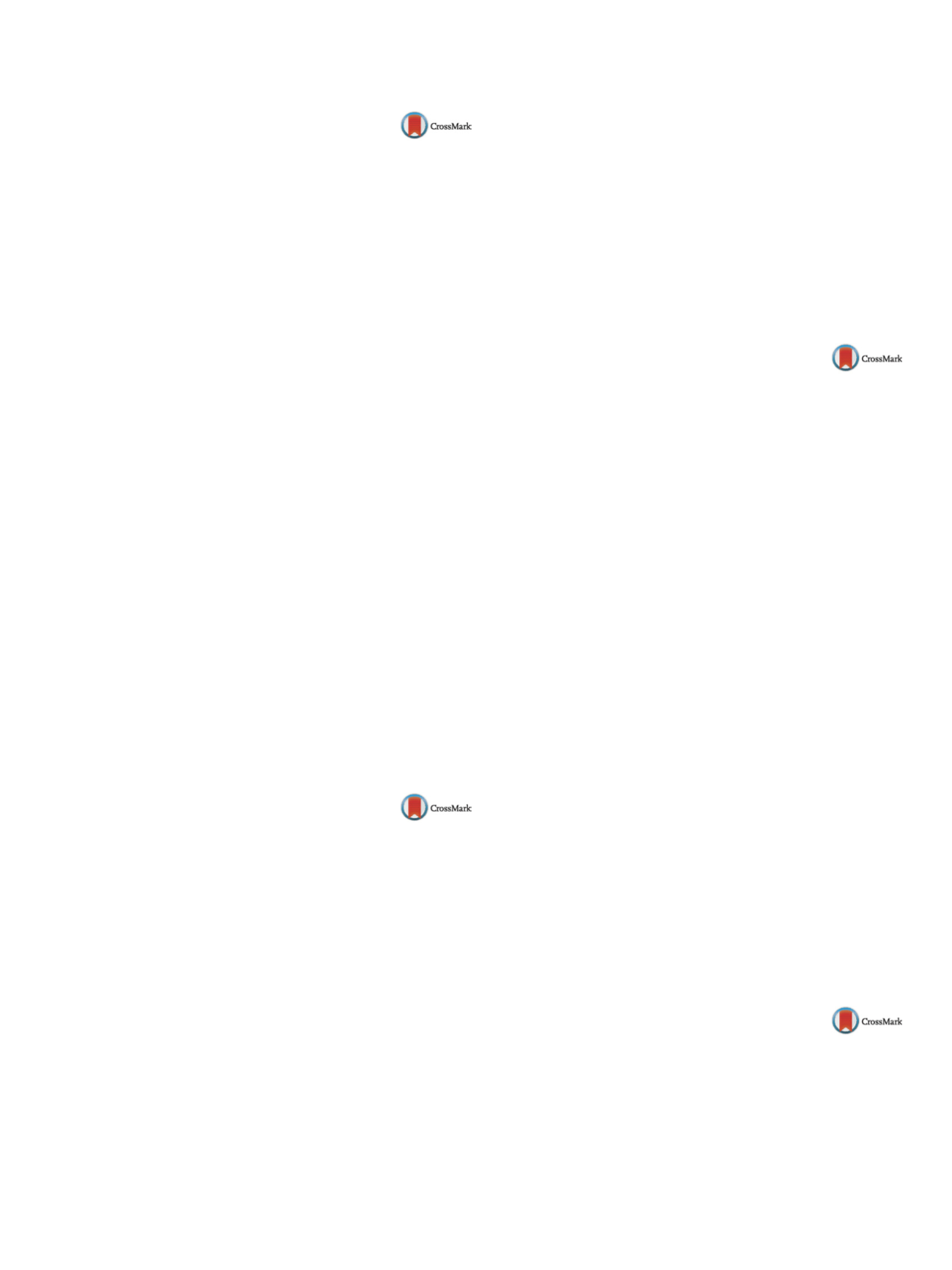

25th European Congress of Psychiatry / European Psychiatry 41S (2017) S106–S169
S147
EW0123
Remote cognitive behavior therapy
for obsessive-compulsive disorder in
Egypt: A randomized trial
R. Aly
Egyptian Association of Cognitive Behavior Therapy, Research, Cairo,
Egypt
Introduction
Recently, cognitive behavior therapy has gone from
being a promising new treatment to the most well established psy-
chological treatment. In several hundreds of randomized controlled
trials, it has shown effectiveness in treating obsessive-compulsive
disorder. In addition, CBT is thus a highly promising treatment from
a societal cost-effectiveness perspective.
Objectives
Several forms of CBT have been developed using
remote communication methods, the general idea is that CBT
delivered through the Internet or using telephone communication
reflects the content of conventional CBT, but is administered as a
form of therapist-guided treatment protocol.
Aims
Estimation of applicability and efficacy of remote cognitive
behavior therapy for treating patients suffering from obsessive-
compulsive disorder in Egypt.
Methods
A group of patients suffering from obsessive-
compulsive disorder was randomized into two groups; one
received CBT as usual and the intervention group received CBT
using telephone and/or the Internet. Both groups were assessed
pre– and post treatment using the Yale Brown Scale for OCD
symptom severity and Beck depression inventory for symptoms of
associated depression. The quality of life scale was also applied to
all patients participating in the study.
Results
Pre– and post-study measures indicated a statistical and
clinically relevant change in patients of two groups.
Conclusions
Delivering CBT for patients suffering from OCD in
Egypt using remote communication methods appears to be effec-
tive in alleviating symptoms and improving the quality of life.
Yet some adaptations to the standardized treatment protocol are
mandated to render the protocol applicable through remote com-
munication and enhancing cultural reception.
Disclosure of interest
The author has not supplied his/her decla-
ration of competing interest.
http://dx.doi.org/10.1016/j.eurpsy.2017.01.1992EW0124
Developing a platform for online
psychotherapy sessions
M. Bran
1 ,∗
, M. Ladea
1, M. Sarpe
21
University of Medicine and Pharmacy “Carol Davila”, Psychiatry,
Bucharest, Romania
2
CMI “Marcel Sarpe”, Psychiatry, Focsani, Romania
∗
Corresponding author.
Introduction
Providing mental health services by real-time
videoconferencing has been increasingly adopted as a method of
reaching hard-to-serve populations since the early 1990s. There is
a growing body of evidence investigating the efficacy of deliver-
ing online mental health care. Though studies vary in quality, they
generally demonstrate that online mental health care is effective
across multiple age groups. Online is generally well accepted by
patients and specialists and its implementation is feasible. It is also
convenient and cost effective.
Objectives
Due to the fact that almost 75% of Romanian popula-
tion have internet access and that mental health services are still
stigmatized we perceived the opportunity to develop an online
platform where patients can easily find and interact with mental
health specialists using secured videoconference.
Methods
During a timeframe of two years a multidisciplinary
team managed to develop and test an online platform where
patients can access psychotherapy sessions. Main design and devel-
opment targets were usability and confidentiality/security. The
platform has an appointment tool, a secure videoconference solu-
tion and an integrated online payment service.
Results
The platform can be accessed at
https://atlashelp.ro .It
was launched in mid July 2016 and it already gathers more than
50 mental health specialists. The feedback was excellent from both
specialists and patients.
Conclusions
The solution developed is complaint with most of
international standards and offers easy to access and high quality
psychotherapeutic services for Romanian patients.
Disclosure of interest
The authors have not supplied their decla-
ration of competing interest.
http://dx.doi.org/10.1016/j.eurpsy.2017.01.1993EW0125
Automatic analysis of psychotherapy
videos by using synchrony signal
T. Gargot
1 ,∗
, G. Varni
2, M. Chetouani
2, D. Cohen
11
Hopital de la pitie salpetriere, Departement de psychiatrie de
l’enfant et de l’adolescent, Paris, France
2
Universite Pierre et Marie Curie, Institut des Systemes Intelligents et
de la Robotique, Paris, France
∗
Corresponding author.
Introduction
Some techniques of psychotherapy are now widely
evidence-based and very cost effective, especially cognitive and
behavioral therapies. Most of the studies are indirectly based on
patient reported outcomes or problematic behaviors evaluated
before and after the psychotherapy. Unfortunately, studies strug-
gle to control for what is actually happening during psychotherapy,
especially the non-specific aspects, like the interaction between the
patient and the therapist, that is a known predictor of psychothe-
rapeutic efficacy. Consequently, it is difficult to make precise links
between theory and practice, control its application and under-
stand which of its ingredients are the most important.
Objectives
Here, we suggest a research framework to extract
automatically social signals from psychotherapy videos. We
focused on the extraction of synchrony of the motor signal since it
was considered to be a predictor of psychotherapeutic outcome in
an earlier study and a relevant signal for the study of mother-child
interactions.
Methods
We developed open source python and R scripts to com-
pute this synchrony of motion history on a database of interaction
between a parent and a child
http://bit.ly/syncpsyResults
We confirmed that synchrony, was a relevant signal for
studying social interactions since the scores are completely dif-
ferent from synchrony scores computed on shuffle motion history
data. However, these scores alone are unable to distinguish the two
periods of the videos (with and without disagreement).
Conclusion
Synchrony of motion history is a promising marker of
social interactions.
Disclosure of interest
The authors have not supplied their decla-
ration of competing interest.
http://dx.doi.org/10.1016/j.eurpsy.2017.01.1994EW0126
Telemedicine – How does it work in
practice?
J. Kachnic , M. Wojtuszek , J. Wutke , K. Krysta
∗
, M.Krzystanek
Medical University of Silesia, Department of Rehabilitation
Psychiatry, Katowice, Poland
∗
Corresponding author.
Introduction
Today telemedicine is a very popular and rapidly
growing area, which allows the treatment, regardless of the dis-
tance between the patient and doctor. We present the latest
research, conducted amongst polish doctors about the usefulness of
telemedicine as a therapeutic tool in different medical specialties.


















